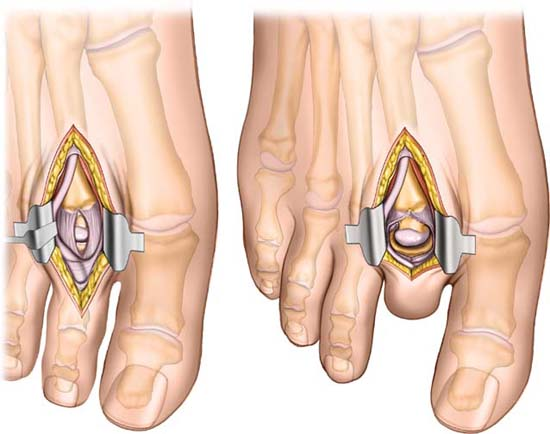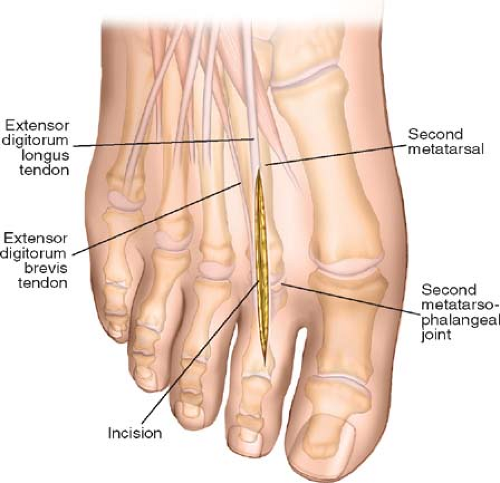 Dorsal Approach to the Second to Fifth Metatarsal Bones
Dorsal Approach to the Second to Fifth Metatarsal BonesThe dorsal approach to the second to fifth metatarsal bones provides safe access for surgery in a number of conditions. Because the metatarsals lie in an almost subcutaneous position, access is relatively easy; however, care must be taken to respect the neurovascular structures on the dorsum of the foot, especially the cutaneous nerves. Damage to these nerves may produce hyperesthesia or at worst a neuroma. Both these complications produce significant postoperative problems for patients. The uses of the approach include the following:
Plating of the shaft of the metatarsal bone in cases of trauma
Access to the distal part of the bone for wiring in cases of trauma
Biopsy or excision of bone tumor
Treatment of osteomyelitis of the metatarsal bone
Corrective osteotomy in cases of fracture malunion
Position of the Patient
Place the patient supine on the operating table. After exsanguination, use a tourniquet placed on the mid-thigh. Alternatively, use a soft rubber bandage to exsanguinate the foot, then wrap the leg tightly just above the ankle (see Fig. 1-1).
Landmarks and Incision
Palpate the shafts of the second to fifth metatarsal bones on the dorsal aspect of the foot. In cases of trauma where usually there is considerable swelling, identification of the metatarsal shafts by palpation may be difficult. In such cases, the use of radiologic control via an image intensifier will ensure that the incision is accurately localized over the area of pathology.
Make a longitudinal incision centered over the site of the pathology (Fig. 44-1). The length of the incision will be determined by the procedure. If surgery is contemplated on two adjacent metatarsal bones, center the incision between the bones to be treated. It is possible to treat two adjacent metatarsal bones through a single incision. Note, however, that this requires more retraction than would be needed for a single metatarsal bone. To reduce the risk of flap necrosis, increase the length of the incision. If all five metatarsal bones are to be treated, make two longitudinal incisions: one over the second to third interspace and the second over the fourth to fifth interspace.
Stay updated, free articles. Join our Telegram channel

Full access? Get Clinical Tree



